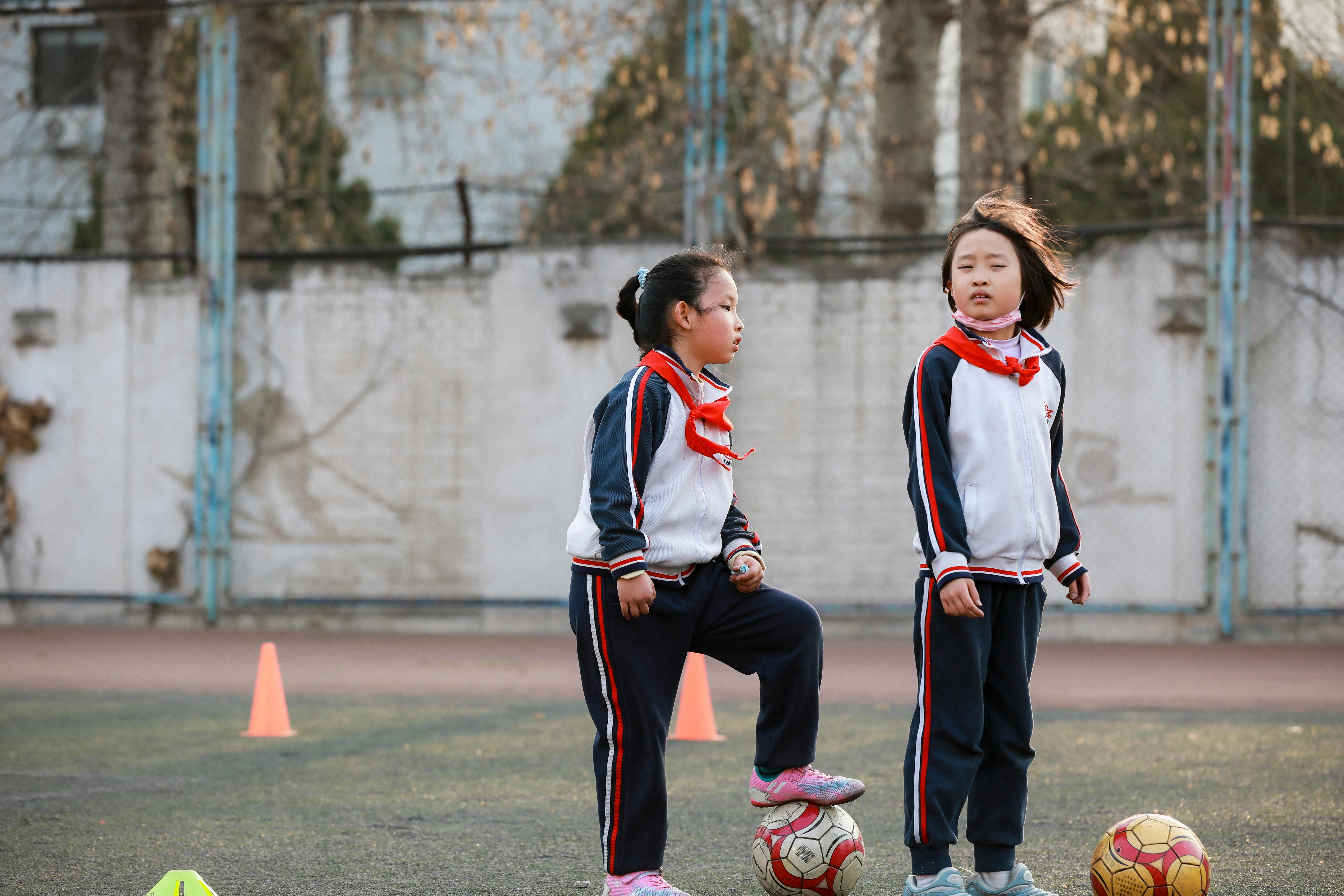Fouls in soccer are committed when a player breaks the laws of the game or acts in an unfair or dangerous way. Fouls can result in a free kick or penalty being awarded to the other team, and they can also lead to a player being substituted off or even sent off the field. It is important for players to understand what constitutes a foul in order to avoid committing them and to protect themselves from opponents who do.Fouls in soccer are any actions committed by a player that is deemed by the referee to be unfair and against the rules of the game. Fouls can occur on or off the ball, and can result in a free kick or penalty kick for the opposing team. Examples of fouls include tripping, pushing, holding, kicking, charging an opponent in a careless or dangerous manner, and using one’s hands to control or handle the ball.
Types of Fouls in Soccer
Soccer is a sport governed by laws and regulations that must be adhered to by all players, officials, and fans. One of the most important laws of soccer is that of fouls. A foul is any act committed by a player, which is deemed to be illegal and against the rules of soccer. Fouls can range from minor infringements to major offences, with varying degrees of severity depending on the nature of the offence. The following are some of the most common types of fouls in soccer:
1. Offside: An offside occurs when a player is in an area that is considered “offside” according to the rules. This usually occurs when a player receives the ball from a teammate who is ahead of them on the pitch and they are closer to the goal than both the ball and two opposing players at the time they receive it.
2. Handball: Handball is one of the most common fouls in soccer as it involves deliberately using your hands or arms to control or touch the ball while playing. It can also occur if a player deliberately handles or punches an opponent’s body or head with their hands or arms during play.
3. Dangerous Play: Dangerous play includes any type of rough, aggressive play which could potentially cause injury to another player, such as kicking out at an opponent’s legs or body, making contact with an opponent’s head with any part of your body or attempting to tackle an opponent without taking proper precautions (i.e., without trying to avoid contact).
4. Holding: Holding occurs when one player grabs onto another player and does not let go for more than two seconds in an attempt to impede their movement on the field or prevent them from gaining possession of the ball.
5. Impeding: Impeding occurs when one player takes action that physically prevents another from moving freely around the field, such as blocking their path or running into them on purpose in order to slow them down or prevent them from getting past them.
6. Dissent: Dissent occurs when a player openly protests against a referee’s decision by arguing with them, gesturing angrily at them, refusing to leave the field after being cautioned, etc.. It can also include verbal abuse directed at referees and other players on either team during play and/or afterwards in post-match interviews/discussions with media outlets or other officials present at matches/tournaments/competitions).
Direct Free Kick
In soccer, a direct free kick is one of the most common ways to score a goal. It is awarded when a player commits a foul, such as holding, tripping, pushing, or kicking an opponent. The kick is taken from the spot where the foul occurred and is taken by the fouled team. The kicker can shoot directly at the goal, or pass to another player in hopes of finding the back of the net.
In order to take a direct free kick successfully, there are several factors that must be taken into consideration. First, it’s important to pick out a target in advance and practice shooting at that target from different angles and distances. This will help give you an idea of what your shot will look like if you were to actually take it in the game. Also, be sure to watch for any defensive players who may try to block your shot or steal the ball away from you.
It’s also important to be aware of your surroundings when taking a direct free kick. The goalkeeper may be positioned differently than usual in order to disrupt your shot or cut off passing options. Additionally, if there are other defenders near you when taking the kick it’s important to keep an eye on them as they may attempt to steal the ball away from you before you can get off your shot.
Finally, practice makes perfect with any type of soccer skill and direct free kicks are no exception. Practicing different types of shots and passes will help improve your accuracy so that when it comes time for you to take an actual kick during a game situation you’ll have more confidence in your ability to score or create scoring chances for your team.
Indirect Free Kick
An indirect free kick is a method of restarting play in a soccer game. It is awarded to the opposing team when a foul has been committed by the offense inside their own penalty area. The indirect free kick is taken from the spot of the foul, and the ball must be touched by another player before it can enter the goal. The players of the defending team must remain at least 10 yards away from the ball until it is in play. If an indirect free kick is taken within the penalty area, it must be taken on the goal line parallel to the goalposts. If an indirect free kick is taken outside of the penalty area, it may be taken from any point along an imaginary arc that runs around 10 yards away from where the ball was originally placed for kick off.
Cautionable Offences
Cautionable offences are criminal offences that are seen as serious enough to require a warning. These offences are often minor, but they can have serious consequences if not taken seriously. The most common cautionable offences include driving under the influence of alcohol or drugs, possession of drugs for personal use, assault, and theft. A caution is a warning issued by the police to an offender for a minor offence. It is not a criminal conviction, although it is recorded on the Police National Computer and may be used as evidence in court should the offender commit another offence. A caution is not normally considered to be part of an individual’s criminal record and it can be removed from police records after a certain period of time. It should also be noted that there are some cautionable offences that may not result in a criminal conviction, such as shoplifting or public disorder. In these cases, the offender may only receive a formal warning from the police instead of being taken to court.
When dealing with cautionable offences, it is important to remember that each case will be assessed on its own merits. Factors such as age, mental health status, previous convictions and other mitigating circumstances will all be taken into consideration when determining if an offence is suitable for a caution or some other form of action. If an offender accepts responsibility for their actions and shows remorse for their actions then they may receive a more lenient penalty than if they had chosen to fight the charge in court. In some cases, an offender may even be eligible for diversionary programs such as restorative justice or drug rehabilitation services.
It is important to remember that any form of criminal behaviour should always be taken seriously and anyone accused of an offence should seek legal advice before making any decisions about how to proceed with their case.

Sending-Off Offences
A sending-off offence is an act by a player that is deemed to be serious enough to warrant a red card. The most common sending-off offences are serious foul play, violent conduct, spitting, and the use of offensive, insulting or abusive language or gestures. A player who is sent off for any of these offences must leave the field of play and cannot be replaced by a substitute. The team must play with one less player for the remainder of the match.
In addition to the standard sending-off offences, certain players may be sent off for denying an opponent an obvious goal scoring opportunity. This includes deliberately handling or fouling an opponent in order to deny them an opportunity to score a goal. A player who is sent off for this offence must still leave the field of play and cannot be replaced by a substitute.
The referee has discretion when dealing with sending-off offences and may choose to issue a yellow card instead if they feel that the offence was not particularly serious. However, if a sending-off offence is committed in a particularly dangerous manner or with excessive force then the referee may choose to issue a red card without first issuing a yellow card.
Handball Foul
Handball is a game which requires the players to work together as team and be aware of the rules in order to play fairly. A handball foul is an unfair play in which a player breaks one of the rules or does not respect the spirit of the game. Fouls can range from minor offenses such as holding or pushing an opponent, to more serious offenses such as striking an opponent or even tackling an opponent. It is important for all players to be aware of all possible fouls and to understand how they can be avoided so that they can play their best game.
The most common handball fouls include obstruction, charging, kicking, pushing, holding, and striking. Obstruction happens when a player blocks another player from getting to the ball by standing in front of them. Charging occurs when a player moves too quickly into another player without giving them time to react. Kicking happens when a player kicks or tries to kick the ball away from another player. Pushing is when a player uses their body or hands to push an opponent out of position. Holding occurs when a player grabs onto an opponent’s clothing or body parts with their hands in order to prevent them from getting closer to the ball.
Striking is one of the more serious handball fouls and happens when a player strikes their opponent with either their body or with objects such as sticks or balls. These types of fouls are often punished by red cards and suspensions for the offending players. It is important for all players to remember that these types of fouls are not allowed and should be avoided in order for everyone to enjoy playing handball safely and fairly.
Impeding an Opponent Foul
An impeding an opponent foul is a technical foul in basketball where a player impedes the progress of another player without making any contact. This type of foul is usually called when one player is screening or setting a pick on another player, attempting to slow down or obstruct their movement. If the defender attempts to go around or through the blocker, they may be deemed to be impeding their progress and will be called for the foul. The most common type of impeding an opponent foul is when a player sets a stationary screen on another and does not move out of the way quickly enough once it has been set. This can often lead to physical contact between the two players which can result in a more serious penalty being assessed.
In some cases, if the defender has established position before the opposing player sets the screen, then they are allowed to remain in that spot and no foul will be called. However, if they do not establish themselves quickly enough before being screened, then they may be deemed as impeding their opponents’ progress and will receive a technical foul. It is important for players on both sides of the court to understand these rules so that they do not inadvertently cause an impeding an opponent foul or get one called against them unnecessarily.

Conclusion
Fouls in soccer are an important part of the game as they help ensure that the rules are being followed and that play is fair and safe. It is essential for all players to understand the laws of the game as well as the various types of fouls that can be committed in order to remain within these boundaries. Referees have a duty to enforce the rules and must be able to recognize when a foul has been committed so that appropriate action can be taken. Players must also understand their responsibilities, and take steps to avoid committing fouls, in order to ensure a safe and enjoyable match for all involved. Soccer is a sport that requires respect for the rules, referees, opponents, teammates, and oneself; only then can it truly be enjoyed by all.
In conclusion, soccer is an exciting sport with many components and understanding fouls is an important part of playing it properly. By understanding what constitutes a foul and taking steps to avoid committing them, players can help ensure an enjoyable experience for everyone involved.

